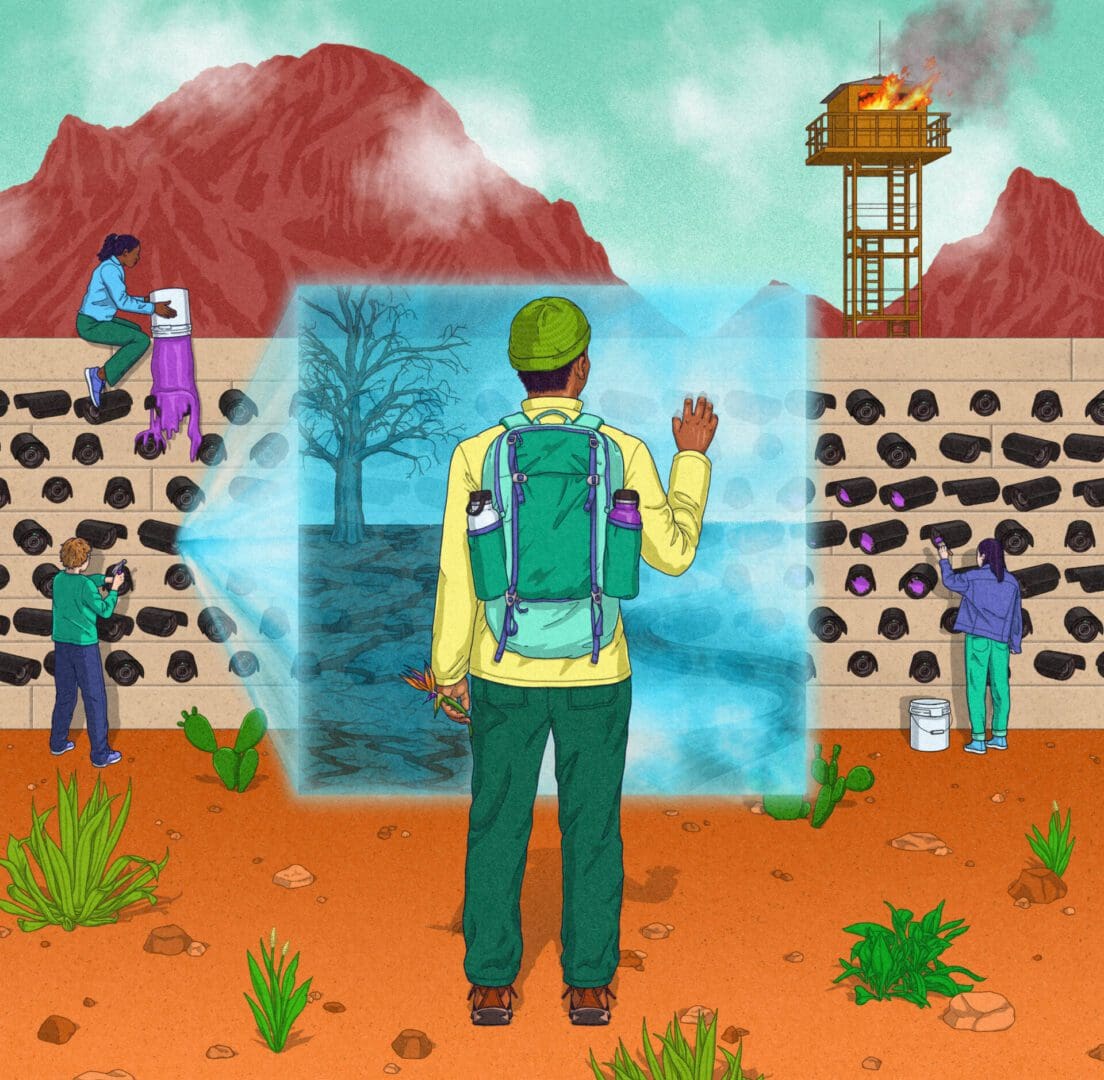Defending the Rights of Refugees and Migrants in the Digital Age, highlights some of the key digital technology developments in asylum and migration management systems, in particular systems that process large quantities of data, and the human rights issues arising from their use.
“This is a snapshot of some of the key digital technology developments in asylum and migration management systems focusing on the increasing digital alternatives to detention, border externalization technologies, data software, biometrics and algorithmic decision-making systems,” said Matt Mahmoudi, Amnesty International Adviser on Artificial Intelligence and Human Rights Technology.
“The proliferation of these technologies risk perpetuating and reinforcing discrimination, racism, disproportionate and unlawful surveillance against racialized people.”
These technologies are increasingly becoming a key human rights concern as states deploy them in ways that violate their human rights obligations towards refugees and migrants.
Nature of digital technology deployment
The briefing documents how governments across the world have deployed specific technologies in asylum and migration systems.
Border authorities in the United States have used the Intensive Supervision Appearance Program (ISAP) and the Electronic Monitoring Device Program, to monitor migrants and asylum seekers released from detention arguing that the intention was to provide release options for migrants and asylum seekers.
However, these products have been linked to violations of human rights.
The briefing also highlights the U.S. government’s deployment of “smart” surveillance infrastructure such as Al-driven watchtowers along the US-Mexico border increasing the risk of profiling Black, Latin American and other racialized communities.
In the UK mandatory electronic ankle “tagging” has been used to monitor all foreigners facing deportation, while facial recognition-enabled smart watch tracking has been proposed.
The European Union (EU) has deployed aerial real-time surveillance and drones over the central Mediterranean Sea to identify refugee and migrant boats at sea and coordinate with Libyan authorities to block them from reaching European shores.
An EU-funded automated border control system called iBorderCtrl was piloted in Hungary, Greece and Latvia. The project used an artificial intelligence (AI) ‘lie-detecting’ system to interview travelers seeking to cross borders, while assessing the minute details of their facial expressions using facial and emotion recognition technologies. Travelers deemed to answer questions honestly by the system are provided with a code allowing them to cross the border.
The briefing also shows how Austria, Belgium, Denmark, Germany, Norway and the UK are increasingly introducing laws that allow for the confiscation of phones belonging to asylum seekers for the purposes of corroborating their testimonies when processing their asylum cases.
Discriminatory impact on refugees, migrants and asylum seekers
These technologies are reinforcing exclusion and blocking the movement of Black, Muslim, and other racialized migrants, asylum seekers and refugees.
They are building border regimes that discriminate based on race, ethnicity, national origin, and citizenship status.
For example, the European Union (EU) has expanded its borders virtually into the Mediterranean and across transit regions in Africa through a range of technologies, allowing them to monitor their movement at every step.
“Digital technologies are reinforcing border regimes that disproportionately impact racialized people. Inherent racism is deeply ingrained within migration management and asylum systems,” said Charlotte Phillips, Amnesty International Advisor on Refugee and Migrants’ Rights. “These technologies have inherent biases and errors that threaten the right to non-discrimination as well as other human rights.”
States’ responsibility to protect rights of migrants and asylum seekers
The briefing recommends that states must:
- Protect the rights of people on the move by refraining from using technologies that are at odds with human rights and ensuring digital technologies address systemic racism, xenophobia, and discrimination.
- Prohibit the use of AI-based emotion recognition tools, especially in the context of migration, asylum, and border control management.
- Conduct human rights impact assessments and data protection impact assessments before deployment of digital technologies.
- Prohibit automated risk assessment and profiling systems in migration, asylum management, and border control.
- Prohibit any use of predictive technologies that wrongfully threaten the right to asylum.
Background
Amnesty International is publishing this introduction to defending the rights of refugee and migrants in the digital age to aid civil society organizations, activists, journalists, and supporters of the movement who want to learn about the digital characteristics of asylum and migration management practices and their human rights consequences.
Contact: [email protected]

